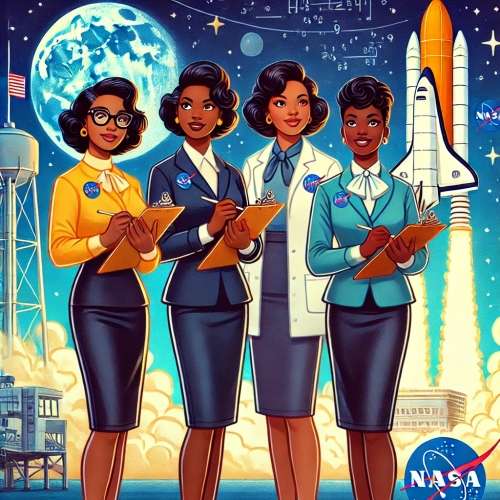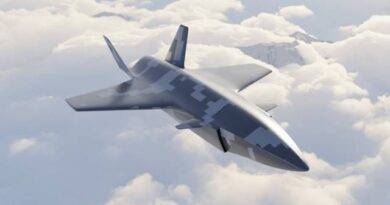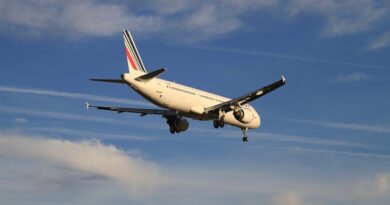Hidden Figures: The True Story of Four Black Women and the Space Race
The inspiring legacy of African-American women at NASA is a story of ingenuity, perseverance, and transformative impact on aerospace. Their pioneering contributions during the space race not only propelled the United States into orbit but also laid the groundwork for modern aviation technologies. While the popular narrative often highlights Katherine Johnson, Dorothy Vaughan, and Mary Jackson, some reliable sources also include Christine Darden among these trailblazers. This article examines their verified contributions and how they continue to influence aviation and space exploration.
Historical Context: The Space Race and Aviation Innovation
During the mid-20th century, the space race between the United States and its global rivals demanded revolutionary advancements in mathematics, engineering, and computer science. At NASA, African-American women broke down barriers to deliver the precision required for calculating orbital trajectories, ensuring flight safety, and optimizing aerodynamics. Their work was integral to:
- Advancing Computational Methods: Transitioning from manual calculations to digital computing, their innovations paved the way for today’s sophisticated navigation systems and simulation tools.
- Enhancing Flight Safety and Aerodynamic Research: The mathematical models and engineering insights they provided continue to underpin modern aircraft design and space mission planning.

Source: aviationfile, used AI
Pioneering Contributions: Profiles of the Hidden Figures
Katherine Johnson
Katherine Johnson’s mathematical prowess was critical to NASA’s early successes. Her accurate calculations of orbital mechanics ensured the safe launch and return of spacecraft—most famously contributing to John Glenn’s historic orbital flight. Johnson’s legacy lives on in the advanced computational techniques used in both aviation and space navigation.
Dorothy Vaughan
Dorothy Vaughan emerged as one of NASA’s first African-American supervisors and a computing pioneer. Mastering early computer systems, Vaughan led teams that transformed manual calculations into automated processes. Her work streamlined mission planning and laid the foundation for the digital advancements that modern aerospace and aviation depend upon.
Mary Jackson
Breaking barriers as NASA’s first African-American female engineer, Mary Jackson specialized in aerodynamics. Her research on airflow and aircraft performance directly influenced the design and safety of both aircraft and spacecraft. Jackson’s contributions underscore the critical role of engineering innovation in the evolution of aviation technology.
Christine Darden
While the 2016 film Hidden Figures centers on Johnson, Vaughan, and Jackson, several sources also recognize Christine Darden as a key figure. Darden’s groundbreaking work in aerodynamics—particularly her research on sonic booms and supersonic flight—has had a lasting impact on aerospace engineering. Her career at NASA, marked by pioneering studies in computational fluid dynamics, further diversified the contributions of African-American women in an era when their achievements were often overlooked.
Note: The grouping of these figures can vary by source. Some accounts emphasize Annie Easley as the fourth contributor, while others highlight Christine Darden for her influential work. Both perspectives celebrate the wide-ranging talent that enriched NASA’s legacy.
Impact on Modern Aviation and Aerospace
The innovations introduced by these women continue to resonate in today’s aerospace industry:
- Advanced Navigation and Flight Control: The computational techniques they developed are integral to modern flight simulators and navigation systems, enhancing both air travel efficiency and safety.
- Technological Transformation: Their shift from manual calculations to digital computation set the stage for the sophisticated software and simulation tools used in aircraft design and space exploration.
- Diversity and Inclusion in STEM: Their achievements shattered racial and gender barriers, inspiring a new generation of engineers, mathematicians, and scientists who continue to drive innovation in aviation and space.
Movie Recommendation: “Hidden Figures”
For those eager to explore this narrative further, the film “Hidden Figures” (2016) is an excellent starting point. The movie dramatizes the challenges and triumphs of Katherine Johnson, Dorothy Vaughan, and Mary Jackson, offering:
- Historical Insight: A vivid portrayal of the segregated environment at NASA and the perseverance required to overcome systemic obstacles.
- Inspiration for Future Generations: The film underscores the importance of diversity in STEM, reflecting how these pioneers helped shape the future of aviation and space exploration.
- Aviation and Space Perspective: Viewers gain an understanding of the mathematical and engineering feats behind space missions—a perspective highly relevant to aerospace enthusiasts.
Below is a concise table summarizing what STEM means:
| STEM Area | Focus/Description | Example Subjects/Activities |
|---|---|---|
| Science | Exploration of the natural world | Biology, Chemistry, Physics Experiments |
| Technology | Use and creation of tools and systems | Coding, Digital Literacy, Computer Use |
| Engineering | Designing and building solutions | Robotics, Structural Design, Prototyping |
| Mathematics | Quantitative reasoning and problem-solving | Algebra, Geometry, Statistics |
Conclusion
The true story of these groundbreaking women is a cornerstone of aerospace history. Their efforts during the space race not only advanced the United States’ capabilities in space exploration but also revolutionized aviation technology. Whether you follow the grouping that includes Annie Easley or the one that features Christine Darden, there is no denying that their collective legacy continues to inspire and drive innovation in STEM fields.
For further insights, reputable resources include NASA’s official Hidden Figures page and Margot Lee Shetterly’s seminal book Hidden Figures: The American Dream and the Untold Story of the Black Women Mathematicians Who Helped Win the Space Race. Embracing their legacy reminds us that diversity and innovation go hand in hand in pushing the boundaries of what is possible in aviation and space exploration.


